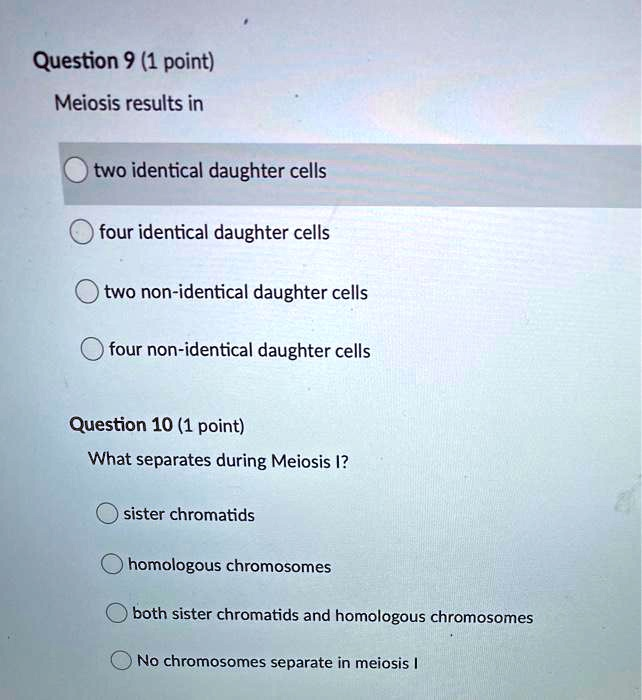Meiosis results in two identical daughter cells four identical daughter cells two non-identical daughter cells four non-identical daughter cells Question 10 (1 point) What separates during Meiosis I? sister chromatids homologous chromosomes both sister chromatids and homologous chromosomes No chromosomes separate in meiosis

The Correct Answer and Explanation is:
In response to the questions shown in the image:
Question 9: Meiosis results in:
- The correct answer is four non-identical daughter cells.
Explanation:
Meiosis is a type of cell division that reduces the chromosome number by half, producing four non-identical daughter cells, each with half the chromosome number of the original cell. This process is essential for sexual reproduction and contributes to genetic diversity. Unlike mitosis, which results in two identical daughter cells, meiosis consists of two rounds of division (meiosis I and meiosis II) and includes genetic recombination (crossing-over) between homologous chromosomes. This reshuffling of genetic material results in non-identical daughter cells.
Question 10: What separates during Meiosis I?
- The correct answer is homologous chromosomes.
Explanation:
In meiosis I, homologous chromosomes are separated into different cells. Each chromosome in a homologous pair consists of two sister chromatids. During meiosis I, the homologous chromosomes (not the sister chromatids) are distributed into separate cells. This reduction in chromosome number is a key feature of meiosis. Meiosis II, which is similar to mitosis, will then separate the sister chromatids into individual cells.
To summarize:
- Meiosis produces four non-identical daughter cells.
- In meiosis I, homologous chromosomes separate.
